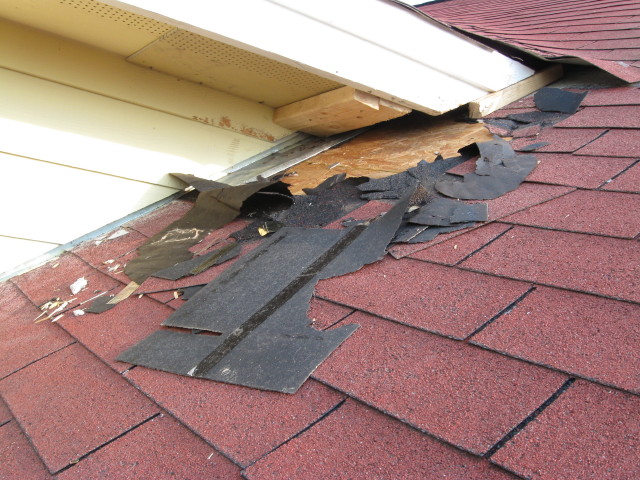Raccoons have adapted to urban sprawl, from rural settings to the metropolitan landscape.
The raccoon’s omnivorous and voracious appetite, relatively high reproduction rate, together with significant strength, results in this mammal becoming a common menace to homeowners.
Diseases
Raccoons are considered high risk carriers of rabies, in addition to serving as a host to fleas, mites, and ticks. The raccoon is also a known to host the raccoon roundworm, which is microscopic eggs found in raccoon droppings. Distemper is also found in raccoons and can be transmitted to domestic pets.
Biology & Habits
Raccoons are both opportunist and omnivorous. They will eat plants, including all types of fruits, berries, nuts acorns, corn, and another types of grains. The raccoon’s diet can also include crayfish, clams, fish, frogs, snails, insects, turtles and their eggs, mice rabbits, chickens, and eggs of young birds and waterfowl.
Raccoons, like most people, find that making a living in an urban setting is much easier than survival in a rural area; for example the availability of dog and cat food left out. Other sources of food include bird feeders, compost piles trash cans and dumpsters, etc. The raccoon is consistently exploring and a curious animal of the bear family. Although raccoons are nocturnal, they can become ‘urbanized’ losing their fear of humans and human activity resulting in being seen during daylight hours. This presents a potentially dangerous situation, particularly for children and pets, when the determined raccoon does not avoid humans. Raccoons typically breed in February or March. Their gestation period is about 63 days, with most litters born in April or May. However some late-breeding females may not give birth until June, July or August. Only 1 litter is raised per year, with the average litter size of 3 to 5 babies. The young will open their eyes at about 3 weeks of age and are weaned sometime between 2 and 4 months of age. Family groups (female an offspring) gradually separate soon after.
Management
Once a raccoon is determined to live in your attic, the intruder must be trapped and removed to lessen the chance of future damage caused by the animal trying to re-enter the structure. Raccoons denied their previously used access will often make a new entry point.
Austin’s Wildlife Removal Services (AWRS) identifies the raccoon’s entry point and monitors the entry even after the catch.
Once all raccoons are removed AWRS uses 26 gauged paint grip sheet metal at roof intersections and at chimneys. All roof vents are proofed with a 23 gauged galvanized and woven hardware cloth, which prevents an animal entry, while allowing air flow thru roof vent.

Physical Abilities
The ability of raccoons is generally under estimated. Raccoons can climb any surface with the exception of glass and un-weathered sheet metal; climbing vertical walls such as wood, stone, brick, masonite siding and the downspouts of gutters is no challenge. Raccoons often gain access in attics thru roof, gable and soffit vents and roof intersections; ripping access holes thru composition roofs and mortar chimney caps in disrepair is common. If a raccoon is determined to gain access, there’s no stopping them. See the raccoon photo gallery section for examples.
Damage
Allowing raccoons to access your attic or under the house can be costly. Continued allowance of raccoon infestation can be more costly than the original cost for removal and prevention. Raccoons can damage a roof just by exploring, breaking off shingle tabs, pulling up on roof and chimney flashing, thereby causing a roof to leak. Raccoons in your attic can damage the air conditioning system, by puncturing or ripping holes in the ducts, forcing their way thru fan powered roof vents when entering a attic, and often a raccoon latrine is found in attics.

[galleria transition=”fade” width=”100%” enable=”image_crop,show_counter,show_imagenav,pause_on_interaction,lightbox”]
[image]https://austinswildliferemoval.com/wp-content/uploads/2012/06/raccoon_6-10-2012.jpg[/image]
[image]https://austinswildliferemoval.com/wp-content/uploads/2011/09/X21.jpg[/image]
[image]https://austinswildliferemoval.com/wp-content/uploads/2011/09/X21.jpg[/image]
[image]https://austinswildliferemoval.com/wp-content/uploads/2011/09/X20.jpg[/image]
[image]https://austinswildliferemoval.com/wp-content/uploads/2011/09/X19.jpg[/image]
[image]https://austinswildliferemoval.com/wp-content/uploads/2011/09/X18.jpg[/image]
[image]https://austinswildliferemoval.com/wp-content/uploads/2011/09/X17.jpg[/image]
[image]https://austinswildliferemoval.com/wp-content/uploads/2011/09/X16.jpg[/image]
[image]https://austinswildliferemoval.com/wp-content/uploads/2011/09/X15.jpg[/image]
[image]https://austinswildliferemoval.com/wp-content/uploads/2011/09/X14.jpg[/image]
[image]https://austinswildliferemoval.com/wp-content/uploads/2011/09/X13.jpg[/image]
[image]https://austinswildliferemoval.com/wp-content/uploads/2011/09/X12.jpg[/image]
[image]https://austinswildliferemoval.com/wp-content/uploads/2011/09/X11.jpg[/image]
[image]https://austinswildliferemoval.com/wp-content/uploads/2011/09/X10.jpg[/image]
[image]https://austinswildliferemoval.com/wp-content/uploads/2011/09/X09.jpg[/image]
[image]https://austinswildliferemoval.com/wp-content/uploads/2011/09/X08.jpg[/image]
[image]https://austinswildliferemoval.com/wp-content/uploads/2011/09/X07.jpg[/image]
[image]https://austinswildliferemoval.com/wp-content/uploads/2011/09/X06.jpg[/image]
[image]https://austinswildliferemoval.com/wp-content/uploads/2011/09/X05.jpg[/image]
[image]https://austinswildliferemoval.com/wp-content/uploads/2011/09/X04.jpg[/image]
[image]https://austinswildliferemoval.com/wp-content/uploads/2011/09/X03.jpg[/image]
[image]https://austinswildliferemoval.com/wp-content/uploads/2011/09/X02.jpg[/image]
[image]https://austinswildliferemoval.com/wp-content/uploads/2011/09/X01.jpg[/image]
[image]https://austinswildliferemoval.com/wp-content/uploads/2014/05/2014-04-22-15.35.41.jpg[/image]
[image]https://austinswildliferemoval.com/wp-content/uploads/2014/05/2014-04-21-13.48.35.jpg[/image]
[/galleria]
